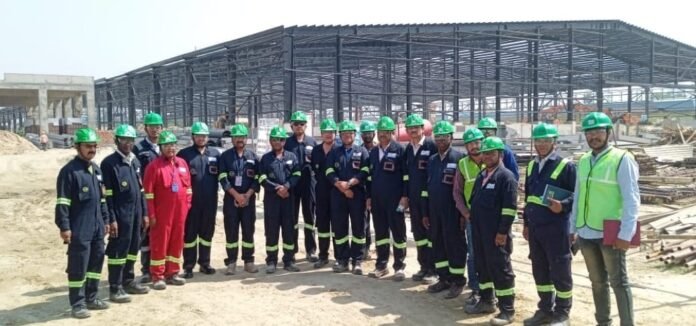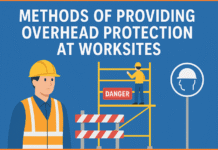Contents
Introduction to Management Review in OHSMS
Management review is a fundamental aspect of Occupational Health and Safety Management Systems (OHSMS), integral to ensuring that the safety protocols and procedures remain effective and relevant. Within the context of OHSMS, a management review refers to a formal evaluation conducted by top management to assess the overall performance of the safety management system. This evaluation is not only a regulatory requirement but also a strategic process aimed at aligning the OHSMS with the organization’s goals and objectives.
One of the primary objectives of the management review is to ensure that the OHSMS is tailored to the specific needs of the organization. This involves assessing whether the current safety policies and procedures are adequate to mitigate risks and enhance workplace safety. By reviewing these elements, organizations can identify gaps or areas in need of improvement, ensuring that all safety measures are up-to-date and effective.
Another critical goal of the management review is to enhance safety performance. This is achieved by analyzing safety data, incident reports, and audit findings to identify trends and patterns that could indicate potential hazards. Through this analysis, top management can make informed decisions on necessary changes or enhancements to the existing safety protocols, thereby proactively preventing accidents and incidents.
Promoting continuous improvement is also a key focus of the management review process. Continuous improvement ensures that the OHSMS evolves in response to new challenges and opportunities, fostering a culture of safety within the organization. This iterative process encourages regular feedback, stakeholder engagement, and the implementation of best practices, ultimately leading to a safer and more resilient workplace.
The role of top management in the management review process cannot be overstated. Their commitment and leadership are crucial in driving the safety agenda forward. By actively participating in the review, top management demonstrates their dedication to safety, which can significantly influence the overall safety culture within the organization. Their decisions during the review process set the tone for safety priorities and resource allocation, ensuring that the OHSMS receives the necessary support and attention.
Ensuring Suitability of the OHSMS for Organizational Needs
Management reviews play a pivotal role in ensuring that the Occupational Health and Safety Management System (OHSMS) remains aligned with the evolving needs of an organization. These reviews are essential for evaluating the system’s effectiveness and suitability in addressing both current and future occupational health and safety challenges.
One of the primary procedures involved in assessing the suitability of the OHSMS is evaluating its alignment with the organization’s goals. This process begins with a thorough examination of the company’s objectives and how the OHSMS supports these goals. Management must ensure that the health and safety policies, procedures, and practices are not only in compliance with regulatory requirements but also contribute to the overall strategic direction of the organization.
Risk management is another critical component of this assessment. Management reviews should involve a detailed analysis of existing risk management strategies to determine their effectiveness in mitigating potential hazards. This includes examining incident reports, identifying trends, and evaluating the adequacy of current control measures. By doing so, organizations can proactively address risks and prevent workplace incidents.
Incorporating feedback from employees and stakeholders is indispensable for the continuous improvement of the OHSMS. Management reviews should include mechanisms for collecting and analyzing feedback from various sources, such as safety committees, employee surveys, and stakeholder meetings. This feedback provides valuable insights into the practical challenges faced by employees and helps in identifying areas for improvement.
To measure the suitability of the OHSMS, organizations can utilize various tools and metrics. Key performance indicators (KPIs), such as the number of reported incidents, the rate of near-misses, and employee training completion rates, are commonly used to gauge the system’s effectiveness. Additionally, tools like safety audits, hazard assessments, and compliance checklists provide a structured approach to evaluating the OHSMS’s performance.
Through regular management reviews, organizations can ensure that their OHSMS remains relevant and effective, fostering a safer and healthier work environment. By continuously aligning the system with organizational goals, assessing risk management strategies, and incorporating feedback, organizations can achieve sustained improvements in occupational health and safety.
Ensuring adequate staffing and resources is crucial for the effective functioning of an Occupational Health and Safety Management System (OHSMS). The management review process plays a vital role in identifying gaps in staffing and resource allocation, thereby recommending necessary adjustments to optimize the system’s performance. Adequate staffing ensures that all roles and responsibilities within the OHSMS are effectively executed, fostering a culture of safety and compliance.
OHS personnel, including safety officers, health advisors, and coordinators, hold significant responsibilities in maintaining and improving workplace safety standards. Their roles range from conducting risk assessments and safety audits to implementing safety training programs and emergency response plans. For their efforts to be effective, it is imperative that these personnel are well-trained and equipped with the necessary skills and knowledge. Continuous training and professional development programs are essential to keep them updated on the latest safety regulations, technologies, and best practices.
Besides human resources, financial and material resources are equally important. Adequate funding ensures that the OHSMS can invest in necessary safety equipment, technology, and infrastructure improvements. For instance, purchasing quality personal protective equipment (PPE), installing safety barriers, and implementing advanced monitoring systems can significantly enhance workplace safety. Moreover, allocating budget for regular maintenance and upgrades of safety equipment is essential to prevent equipment failure and ensure ongoing protection.
Management reviews provide a structured approach to evaluate the adequacy of staffing and resources. By systematically assessing current resource allocation against safety performance metrics and incident reports, management can identify areas that require additional support. For example, if an increase in workplace incidents is traced back to insufficient training, management can prioritize investing in more comprehensive training programs.
Organizations that have successfully optimized their OHSMS through proper resourcing serve as valuable case studies. For instance, a manufacturing company that invested in advanced safety training and state-of-the-art machinery saw a significant reduction in workplace injuries. Similarly, a construction firm that allocated resources for continuous safety audits and employee wellness programs reported improved compliance and reduced absenteeism.
Continuous Improvement through Management Review
Management reviews are pivotal in driving the continuous improvement of Occupational Health and Safety Management Systems (OHSMS). At the core of this process lies the Plan-Do-Check-Act (PDCA) cycle, a systematic series of steps for managing and enhancing health and safety performance. The PDCA cycle ensures that the OHSMS is not static but evolves to meet emerging challenges and opportunities.
During the Plan phase, goals and objectives related to occupational health and safety are established based on identified risks, legal requirements, and organizational policies. This phase involves meticulous planning and resource allocation to address critical areas that need attention.
The Do phase involves the implementation of plans and strategies. Here, measures are taken to mitigate risks and ensure compliance with safety standards. This may include training programs, policy updates, and the introduction of new safety protocols.
In the Check phase, data from various sources such as incident reports, internal audits, and performance metrics are collected and analyzed. This analysis helps in identifying trends, uncovering underlying issues, and evaluating the effectiveness of implemented measures. Key performance indicators (KPIs) and benchmarks are often utilized to measure progress and pinpoint areas needing improvement.
The Act phase is where the findings from the Check phase are used to make informed decisions about necessary adjustments. This might involve revising policies, enhancing training programs, or adopting new technologies to improve safety outcomes. The changes are then monitored to assess their effectiveness, ensuring they contribute to the overall enhancement of the OHSMS.
Best practices in implementing changes include clear communication of new procedures to all stakeholders, providing adequate training, and ensuring continuous feedback loops are in place. Regular monitoring and review are essential to validate the effectiveness of these changes, ensuring they lead to a safer and healthier work environment.
In essence, management reviews act as a feedback mechanism that fosters a culture of continuous improvement within the organization. By systematically evaluating performance and making data-driven decisions, organizations can enhance their occupational health and safety management systems, thereby safeguarding the well-being of their workforce.





